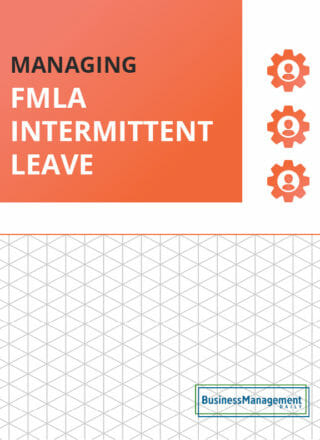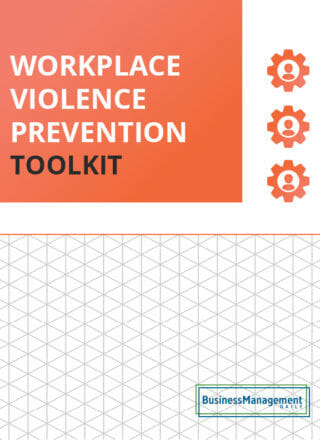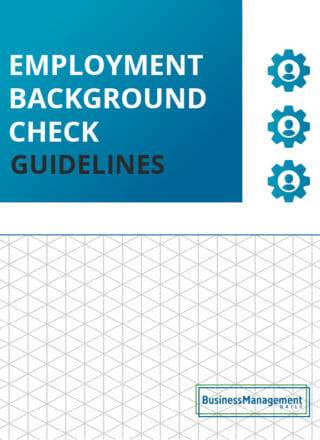7 steps to help prevent and address workplace bullying
 We all knew schoolyard bullies; if we were lucky, they left us alone. The less fortunate sometimes suffer devastating, long-term effects from bullying. Society has increased its focus on school bullying over the years.
We all knew schoolyard bullies; if we were lucky, they left us alone. The less fortunate sometimes suffer devastating, long-term effects from bullying. Society has increased its focus on school bullying over the years.
However, new challenges have arisen as bullying has moved into cyberspace with widespread impact. We continue to strive, however, to provide children with safe, healthy environments in which they can flourish and meet their full potential.
Costs of bullying
But what about our workplaces? Sadly, research indicates many workers are targets of “work yard” bullies. A 2017 Workplace Bullying Institute survey (www.workplacebullying.org) revealed that 19% of adult Americans have experienced abuse on the job; 37% (including witnesses) have been affected by workplace bullying. Most employees, 63% of workers, believe workplace bullying happens.
Workplace bullying comes with significant costs. Victims can suffer physical or emotional harm that interferes with their professional and personal lives.
Employers, in turn, may suffer the costs associated with decreased attendance, increased medical and insurance claims, legal claims, lost productivity, and opportunity costs resulting from demoralized and distracted workers.
Studies also show that employees working in intimidating environments are less likely to speak out about potentially dangerous or otherwise costly errors.
All of this can affect an employer’s bottom line and competitive edge.
Legislating bully control
Despite the costs, workplace bullies have received less attention than schoolyard bullies. In May 2011, Minnesota became the 21st state to propose a workplace bullying law called the Healthy Workplace Bill.
It has been proposed in every legislative session since. While no state has yet passed legislation, Minnesota is one of 32 legislatures (30 states and two territories) considering the law.
Violent physical bullying and bullying based on protected class status are unlawful under current laws. However, being an equal opportunity jerk is generally not against the law.
Those who are skeptical about anti-bullying legislation say it’s impossible to define illegal bullying adequately and that the bar for claims could be set too low.
Employers worry they cannot ensure workplace civility and will experience a flood of frivolous litigation stemming from legitimate actions, such as efforts to discipline poor performers.
Proactive employer strategies
Rather than wait for legislation, employers can craft their policies to at least contain bullying. For example, working with more aggressive employees to be more inclusive during meetings may be a practical approach.
It may change if the bully’s performance is measured by non-bullying behavior. Altering the incentives in the workplace may work in some cases.
Countering the bully
Anti-bullying advocates hope to ride the coattails of the #MeToo anti-harassment movement. Bullying and sexual harassment stem from the same power imbalances.
If you haven’t already, it’s time to start paying attention to the issue to avoid potential legal liability and mitigate the high business costs of bullying.
Some steps to consider taking:
- Adopt a “no jerks” rule. Robert Sutton’s modern business press classic, The No Asshole Rule: Building a Civilized Workplace and Surviving One that Isn’t, contains an interesting discussion of the reasons for such a rule and tips for addressing bullying, some of which are discussed below.
- Adopt and, more importantly, enforce an anti-bullying policy. Like your anti-harassment policy, an anti-bullying policy should explain how employees report incidents and prescribe how the organization must respond. Caution: Include specific contract disclaimers referring to your anti-bullying policy.
- Avoid hiring bullies in the first place. Including potential peers and subordinates, not just potential managers, in the interview process may help prevent bullies from being hired. Studies indicate that bullies often target those with less power, so peers and subordinates may be better positioned to spot troubling behavior in interviews.
- Treat bullying as a performance problem. Don’t reward or promote bullies. Doing so sends a message that bullying is accepted and not a bar to success. Instead, reform or get rid of bullies whenever possible. No matter how valuable an employee seems, the real and significant costs of bullying, if quantified, often outweigh a bully’s perceived value.
- Train your employees on the company’s expectations regarding bullying. You might also train employees to engage in constructive, respectful confrontations and debates.
- Use available counseling resources. These might include anger and management counseling and employee assistance programs. Mediation services may also be available to address particularly aggressive bullies by establishing ground rules.
- Take steps to prevent violence. Most bullying does not turn violent, but bullying can be a precursor to violence by the bully or a target of bullying. Consider forming a threat assessment team to assess and address violence risks as they arise.
More resources:
Bullies at work — How to handle toxic coworkers ![]()
Avoid the perception of bullying: 8 do’s and don’ts ![]()
Workplace etiquette: The ultimate guide to professionalism ![]()





